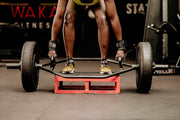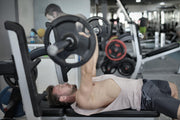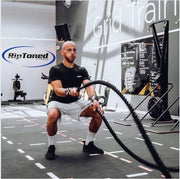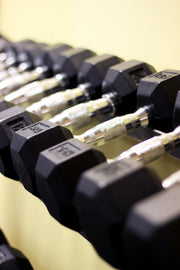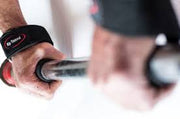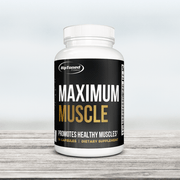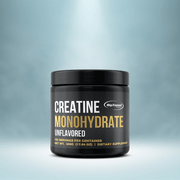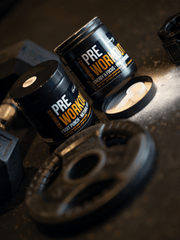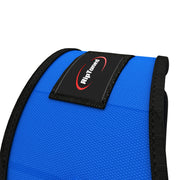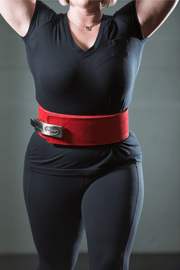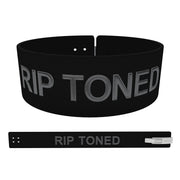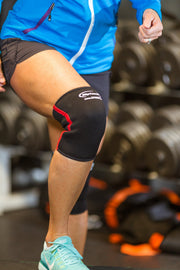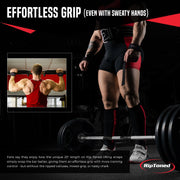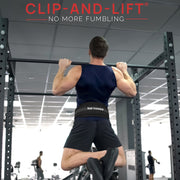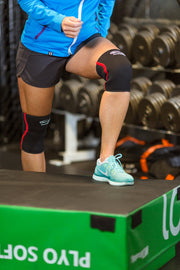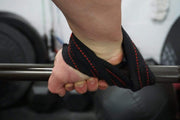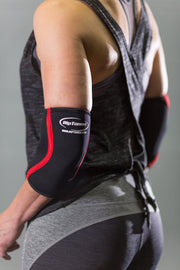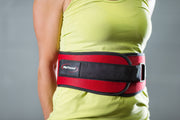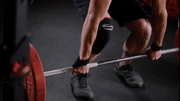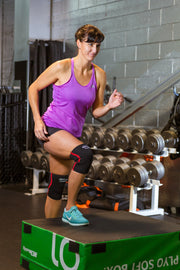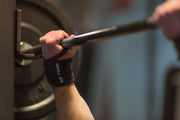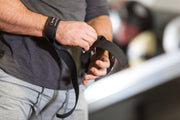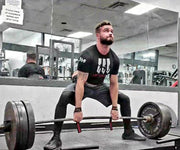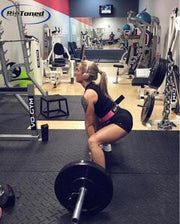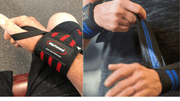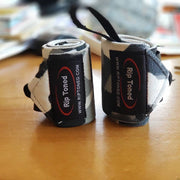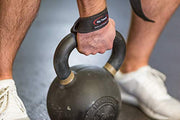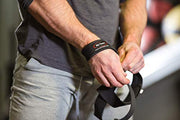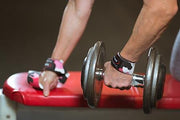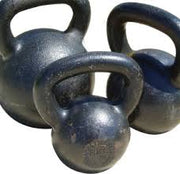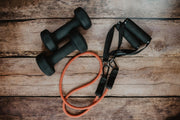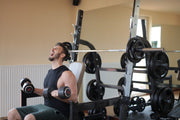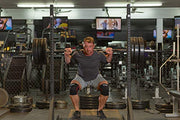Are you experiencing pain in your elbow when doing push-ups? You're not alone. Many people face this issue while performing this popular exercise. Push-ups are a great way to build upper body strength, but the repetitive motion can also cause strain and discomfort in various parts of the body, including the elbows.
Elbow pain during push-ups may arise due to various reasons, such as poor form, overuse, or underlying injuries. It's important to address this issue before it becomes a chronic problem and hinders your workout routine.
In this article, we will discuss the possible reasons for elbow pain during push-ups and provide tips on how to prevent and alleviate it. With proper technique and modifications, you can continue to enjoy the benefits of push-ups without experiencing any discomfort. So, let's dive in!
Possible Causes of Elbow Pain During Push Ups
There are several potential reasons why your elbow may hurt during push-ups. It's crucial to identify the root cause in order to address the issue and prevent further pain or injury effectively.
Poor Form:
One of the most common reasons for elbow pain during push-ups is poor form. When performing push-ups, it's important to maintain proper alignment and technique in order to avoid strain on different parts of the body.
Some common mistakes that can lead to elbow pain include flaring out the elbows too much, locking them in a straight position, or allowing them to collapse inward. These actions can put excessive pressure on the elbow joint and surrounding muscles, leading to discomfort and potential injury.
To avoid this issue, make sure to keep your elbows at a 45-degree angle from your body and engage your core while performing push-ups. This will distribute the weight evenly and prevent strain on individual joints. It may also be helpful to perform push-ups in front of a mirror to ensure proper form.
Overuse:
Another possible cause of elbow pain during push-ups is overuse. If you have recently increased the frequency or intensity of your push-up routine, your elbows may need to be more accustomed to the added stress.
Overuse injuries occur when a particular muscle or joint is continuously used without enough rest and recovery time. This can lead to inflammation, discomfort, and ultimately pain in the affected area.
To prevent overuse injuries, it's important to increase your push-up routine gradually and also include rest days in between workouts. This will allow your muscles and joints to recover and adapt to the increased workload.
Underlying Injuries:
In some cases, elbow pain during push-ups may be a symptom of an underlying injury. This could include conditions such as tendinitis, bursitis, or nerve impingement.
If you have a history of elbow injuries or experience consistent pain even with proper form and rest, it's important to consult a medical professional for proper diagnosis and treatment. Ignoring underlying injuries can lead to further damage and hinder your progress.
Lack of Warm-Up:
Not warming up properly before performing push-ups can also contribute to elbow pain. With proper warm-up, your muscles may be prepared for the physical strain of push-ups, leading to discomfort and potential injury.
Before any workout, it's important to perform a dynamic warm-up that targets the specific muscles and joints you will be using. This can include arm circles, shoulder rolls, and wrist rotations to prepare your upper body for push-ups.
Incorporating a warm-up routine into your workout can help prevent not only elbow pain but also other injuries and improve your overall performance. Don't skip this crucial step in your fitness regimen.
How to Prevent Elbow Pain During Push Ups
Now that we have discussed the potential causes of elbow pain during push-ups let's move on to how you can prevent it from happening in the first place.
Focus on Proper Form:
As mentioned earlier, proper form is essential for preventing elbow pain during push-ups. Make sure to keep your elbows at a 45-degree angle from your body, engage your core, and avoid locking or flaring out the elbows.
It may also be helpful to record yourself performing push-ups and analyze your form to identify any areas that may need improvement. You can also seek guidance from a fitness professional or physical therapist for personalized tips on proper form.
Engage Your Core:
Engaging your core not only helps with maintaining proper form but also distributes the weight more evenly throughout your body, taking some strain off your elbows. Make sure to keep your core tight and engaged throughout the entire movement.
To strengthen your core, you can also incorporate specific exercises such as planks and bird dogs into your workout routine.
Gradually Increase Intensity:
If you are just starting with push-ups or have taken a break from them, it's important to increase the intensity of your workouts gradually. This will allow your body, including your elbows, to adapt and become stronger.
Start with a lower number of repetitions or perform modified push-ups (on knees) before progressing to full push-ups. You can also add variations such as incline or decline push-ups to challenge yourself while still maintaining proper form.
Incorporate Rest Days:
Rest days are crucial for allowing your body to recover and rebuild after workouts. Make sure to schedule rest days in between push-up sessions to give your muscles and joints a break.
You can also use active recovery techniques such as foam rolling, stretching, or low-impact exercises on rest days to keep your body moving without putting too much strain on it.
By following these tips and listening to your body, you can prevent elbow pain during push-ups and continue to progress in your fitness journey. Remember, proper form, core engagement, gradual progression, and rest are key to avoiding injuries and achieving your goals.
Tips for Safe and Effective Push Ups
While preventing elbow pain is important, it's also essential to perform push-ups safely and effectively. Here are some additional tips to keep in mind:
- Keep your body in a straight line: Avoid arching or sagging your back during push-ups. Your body should be in a straight line from head to heels.
- Keep your neck neutral: Don't strain your neck by looking up or tucking it too far down. Keep your gaze slightly ahead of you and maintain a neutral spine.
- Breathe properly: Inhale on the way down and exhale on the way up. This will help stabilize your core and provide oxygen to your muscles.
- Avoid overexertion: Don't push yourself too hard or perform more reps than you can handle. Listen to your body and take breaks when needed.
- Don't sacrifice form for quantity: It's better to perform fewer reps with proper form than many repetitions with incorrect form. Quality over quantity is key for safe and effective push-ups.
By incorporating these tips and taking care of your body, you can not only prevent elbow pain but also improve your overall fitness level.
Are elbow sleeves helpful in preventing elbow pain during push-ups?
Elbow sleeves, including elbow straps, elbow braces, and elbow wraps, have gained popularity among athletes and fitness enthusiasts. These compression garments are designed to provide support, warmth, and stability to the elbow joint.
While some people swear by using elbow sleeves for push-ups, there is limited scientific evidence to support their effectiveness in preventing pain or physical therapy injuries. Some experts argue that relying too much on external support can weaken the muscles and joints over time.
However, if you have a history of elbow injuries or experience discomfort during push-ups, using an elbow sleeve may provide temporary relief and allow you to continue your workouts. It's important to remember that elbow sleeves should not be used as a substitute for proper form and listening to your body.
If you do decide to use an elbow sleeve, make sure to choose the right size and fit for your body. It should not be too tight or restrictive, and you should still be able to move comfortably and maintain proper form during push-ups.
Mistakes to Avoid
Lastly, here are some common mistakes to avoid when performing push-ups that can lead to elbow pain or injury:
- Starting with incorrect form: As mentioned earlier, improper form is a major cause of elbow pain during push-ups. Make sure to start with proper form and correct any mistakes before progressing.
- Pushing through pain: If you experience sharp or intense pain during push-ups, it's important to stop and take a break. Pushing through the pain can aggravate an existing injury or cause new ones.
- Not warming up properly: Warming up before any workout is crucial for preparing and avoiding injury to your muscles and joints for physical activity. Skipping warm-ups can increase the risk of injuries, including elbow pain during push-ups.
- Ignoring pain or discomfort: Our body communicates with us through pain and discomfort. If you experience any pain or discomfort during push-ups, it's important to address it and make necessary adjustments instead of ignoring it.
- Not allowing enough rest and recovery: As mentioned earlier, rest days are essential for giving your body time to recover and prevent overuse injuries. Make sure to schedule rest days and listen to your body's signals for when it needs a break.
By being mindful of these mistakes and incorporating the tips mentioned above, you can perform push-ups safely and effectively without experiencing elbow pain or injuries.
Does elbow pain during push-ups mean I have an injury?
Experiencing elbow pain during push-ups does not necessarily mean you have a serious injury. It could simply be due to improper form or overuse of the muscles and joints.
However, if the pain persists or worsens even after taking breaks and correcting your form, it's important to seek medical advice. A healthcare professional can properly assess your condition and provide appropriate treatment or rehabilitation.
Remember, early detection and intervention are key to preventing further injuries and getting back to your fitness routine. So don't hesitate to seek medical help if needed.
FAQs
What causes elbow pain during push-ups?
Elbow pain during push-ups can be caused by various factors, including triceps tendonitis and weightlifter's elbow. These conditions occur when there is inflammation or irritation in the triceps tendon or the surrounding tissues. The repetitive motion of push-ups can exacerbate these conditions and lead to discomfort.
Can shoulder pain contribute to elbow pain during push-ups?
Yes, shoulder pain can contribute to elbow pain during push-ups. The triceps muscle connects the shoulder blades to the elbow, and any issues with the shoulders, such as instability or weakness, can affect the movement and stress placed on the triceps tendon. This can result in pain and discomfort in the elbow area during push-ups.
How can I prevent elbow pain while doing push-ups?
To avoid experiencing elbow pain during push-ups, it is important to focus on proper form and technique. Ensure that your hands are positioned correctly, using a wide grip to reduce stress on the triceps tendon. Additionally, gradually increasing the intensity of your arm workouts and incorporating exercises that strengthen the triceps and shoulders can help prevent injuries. If you have a history of elbow pain or injuries, consulting with a physical therapist or fitness professional may be beneficial.
What can I do if the pain continues despite taking precautions?
If you continue to experience elbow pain during push-ups despite taking precautions, it is advisable to seek professional help. A physical therapist or healthcare provider can assess your condition, perform a thorough evaluation, and provide appropriate treatment options. They may recommend exercises to strengthen the triceps and shoulders, prescribe rest and ice therapy, or suggest the use of a foam roller to alleviate muscle tension. Remember, early intervention and proper care are crucial in avoiding further injury and promoting recovery.
Conclusion
In conclusion, elbow pain during push-ups can be prevented by practicing proper form, engaging your core muscles, gradually progressing, and taking rest days. It's also important to listen to your body and address any discomfort or pain instead of pushing through it.
Useful equipment such as elbow sleeves may provide temporary relief but should not be relied upon as a substitute for proper form and care for your body. By being mindful of common mistakes and seeking medical advice when needed, you can continue to progress in your fitness journey without experiencing elbow pain during push-ups.
Keep pushing, but also remember to take care of yourself along the way! So keep these tips in mind, and happy pushing! Happy Push Ups!


